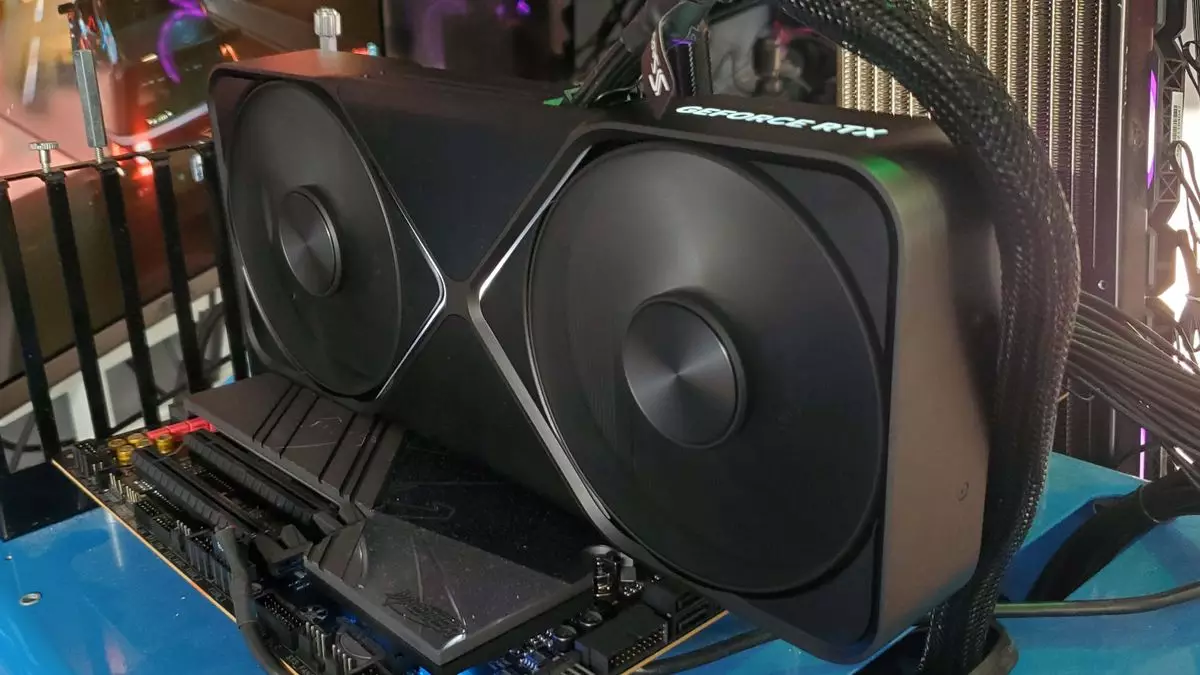The Nvidia RTX 50-series has stirred significant excitement within the gaming community, and rightfully so. As the latest generation of graphics processing units (GPUs), these cards promise groundbreaking performance and enhancements for gamers and creators alike. However, the launch has not been without its hurdles. One of the most pressing concerns has been the limited availability of these GPUs, which has resulted in inflated prices and anxious consumers. Amplifying these issues is a technical complication that has emerged, involving the reported missing Raster Operations Pipelines (ROPs).
ROPs are pivotal components of any GPU, responsible for the final stages of rendering images, including the actual generation of pixels for display. Therefore, when reports surfaced regarding certain RTX 50-series cards having fewer ROPs than specified, it raised alarm among tech enthusiasts and consumers alike. Nvidia’s response indicated that the issue was either isolated or limited in scope, suggesting that it affected a minimal fraction of the products distributed—less than 0.5%.
In response to the rising concerns, Wallace Santos, founder and CEO of Maingear Computers, provided reassurances about the prevalence of the issue. In a detailed explanation posted on LinkedIn, Santos shared that his company had rigorously tested every GPU prior to shipping, mentioning that none of the models checked had shown instances of missing ROPs. This self-assured claim from an industry insider seemed to align with Nvidia’s assertion that only a minute portion of GPUs faced these production anomalies.
While this statement aims to soothe the troubles brewing in the minds of consumers, it also raises questions. Are other manufacturers similarly conducting thorough tests? The onus now falls on the industry players to alleviate fears through transparency in their quality assurance processes. Santos’ claim stands as an important beacon of hope, but without widespread corroboration from other reputable sources, skepticism remains.
The implications of missing ROPs are not just technical; they can significantly affect user experience. The performance dip, reported to be around 4% on average, might not seem exorbitant, but for gamers—or professionals relying on precise digital rendering—every detail matters. Benchmarks from available testing indicate that such performance losses can sometimes overshadow the improvements promised by newer architectures.
Moreover, users who are already battling the inflated market driven by scarcity and demand are left feeling compromised. The experience of purchasing a high-end graphics card only to discover it underperforms due to a “production anomaly” adds insult to injury in an already imperfect buying landscape. There’s a pressing need for far greater clarity from manufacturers on performance expectations to prevent disappointment and ensure consumer trust remains intact.
As Nvidia grapples with these production setbacks, the company has rolled out driver updates aimed at combating other issues, such as black screen problems that have been plaguing some users. Such proactive measures certainly provide a temporary reprieve, but ongoing communication regarding ROPs and other hardware inconsistencies is crucial.
In this high-stakes market, where consumers have been conditioned to aligned expectations with pricing, transparency could prove paramount. Would it be too much to ask for proactive guidance on how affected users can check their cards? Better documentation on the integration of performance checks through software tools or enhanced customer support could further build consumer confidence.
The Nvidia RTX 50-series indeed represents a leap forward in GPU technology; however, the troubling reports of inconsistencies must not be overlooked. As it stands, much remains to be resolved, both in clarifying existing issues and ensuring future quality control. While industry leaders like Maingear provide a glimmer of hope, it is ultimately the responsibility of Nvidia and other manufacturers to ensure that consumers do not get chipped out of what they are promised. As they navigate these challenges, the focus must shift towards thorough testing, transparency, and robust customer support—elements that will bolster confidence in what is undeniably an exciting period for GPU technology.

